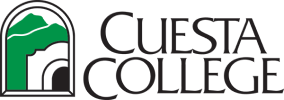
Program Summary
PARAMEDIC - Certificate of Achievement
2021 - 2022, 2022 - 2023, 2023 - 2024, 2024 - 2025
The paramedic training program builds on the solid foundation of basic EMT education and experience by providing the knowledge and skills needed for students to expand into the more complex role of a paramedic. The program prepares individuals to respond to emergencies in the pre-hospital setting and render basic and advanced medical treatment within an organized EMS system. Students who successfully complete the program are eligible to take the National Registry of Emergency Medical Technicians – Paramedic (NREMT-P) licensure exam leading to licensure as a California Paramedic and receive a Certificate of Achievement.
Career Opportunities
Paramedic on an ambulance
Fire Fighter, Paramedic
Flight Medic
Education – Instructor, Director, Administrator
Fire Fighter, Paramedic
Flight Medic
Education – Instructor, Director, Administrator
Required Courses (39.5 units)
Units: 39.5
BIO 212
HUMAN BIOLOGY
3.0
EMS 210
PARAMEDIC THEORY I
17.0
EMS 211
PARAMEDIC THEORY II
5.0
EMS 211L
PARAMEDIC SKILLS
1.5
EMS 212
PARAMEDIC CLINICAL
4.0
EMS 213
PARAMEDIC INTERNSHIP
9.0
Total: 39.5
Program Outcomes
COMPREHENSIVE EMS KNOWLEDGE:
a. Comprehend EMS knowledge necessary to function in a healthcare setting
b. Comprehend general medical knowledge necessary to function in a healthcare setting.
a. Student self-assessment (Data Arc).
Benchmark is 80% (1-5) scale of students agree (4) or strongly agree (5).
b. National registry emergency medical technician-paramedic test (NREMT-P)
Benchmark-passing by 2nd attempt
LEADERSHIP:
a. Apply sound judgment while functioning in a healthcare setting.
b. Conduct oneself in an ethical and professional manner.
c. Communicate effectively in a healthcare setting.
d. Manage time efficiently while functioning in a healthcare setting.
a. Student self-assessment (Data Arc)
Benchmark is 80% (1-5) scale of students agree (4) or strongly agree (5).
b. Final field (major) preceptor evaluation – Benchmark is 100% (3 on a 1-3 grading scale). Students cannot graduate until they have met this benchmark.
PATIENT ASSESSMENT:
a. Collect data from charts and patients.
b. Interpret patient data.
c. Recommend appropriate diagnostic and therapeutic procedures.
d. Perform patient assessment.
a. Student self-assessment (Data Arc)
Benchmark is 80% (1-5) scale of students agree (4) or strongly agree (5).
b. Final field (major) preceptor evaluation
Benchmark is 100% (3 on a 1-3 grading scale). Students cannot graduate until they have met this benchmark
TREATMENT:
a. Perform a broad range of clinical skills.
b. Perform approved therapeutic procedures and modalities
c. Perform and interpret diagnostic procedures.
a. Student self-assessment (Data Arc)
Benchmark is 80% (1-5) scale of students agree (4) or strongly agree (5).
b. Final field (major) preceptor evaluation – Benchmark is 100% (3 on a 1-3 grading scale). Students cannot graduate until they have met this benchmark
FIELD INTERNSHIP FINAL COMPETENCY:
Demonstrate competency in:
a. Scene Management
b. Assessment/Treatment
c. Communication
d. Leadership
e. Equipment
f. Airway
g. Circulation
h. Musculoskeletal Skills
i. Pharmacology
a. Preceptor evaluation of student: Preceptor rates his/her student at the end of their internship - evaluation on a grading scale of 1-3. Benchmark 90%; A rating of “3” which is passing
b. Advisory committee input/minutes
c. Employer Survey